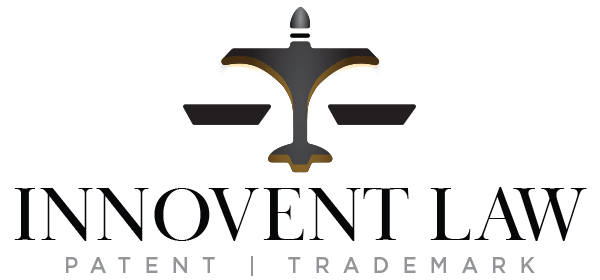Design Patents: Why They Matter Now More Than Ever
by Karima Gulick, registered patent and intellectual property attorney.
Design patents safeguard your products’ unique visual attributes, from overall shape to intricate surface patterns and vibrant colors. By protecting these elements, companies like Apple successfully prevent competitors from mimicking the distinctive look of products like the iPhone, highlighting design’s role in building brand identity.
Owning these patents not only enhances market exclusivity but also boosts product appeal, increasing consumer recognition and loyalty. This strategic protection leads to tangible financial benefits, evidenced by the market dominance and premium pricing power that design-centric companies enjoy.
What does a design patent protect?
A design patent protects the aesthetic aspects of a product, such as its shape, configuration, surface ornamentation, and visual appeal. For example, Apple’s distinctive iPhone body shape is safeguarded by a design patent, which is crucial for maintaining its unique market presence. In contrast, utility patents protect how a product functions and its technical innovations, like Tesla’s battery technology.
Obtaining one is typically quicker and more cost-effective than securing a utility patent. However, for comprehensive protection, companies often start with a provisional patent. This initial step secures an early filing date and gives the inventor a year to refine the invention and prepare for a full utility or design patent application.
Provisional applications act as placeholders for non-provisional applications. However, design inventions cannot be filed as provisional applications.
Thus, while design patents focus on aesthetics, utility patents protect functionality, and provisional patents serve as a preliminary step to both. This strategy not only prevents competitors from copying distinctive features but also fortifies the company’s technological and design innovations in the marketplace.

Key Elements for Successful Applications
Design patents are crucial in protecting the aesthetic aspects of a product, offering significant advantages in competitive markets. This focus is particularly relevant for entrepreneurs looking to safeguard the ornamental designs of their innovations.
- Novelty and Originality: Essential for any application, the design must be completely original and not previously disclosed.
- Non-Functional Design: The design should be purely ornamental, emphasizing the aesthetic over functionality, which is pivotal for maintaining the integrity.
- Visual Description: Detailed visuals are necessary, illustrating every aspect of the design to ensure clarity and completeness. This step is vital, where visual appeal can define a product’s market success.
- Proper Claiming: A clear claim must accompany the visuals, specifying the ornamental design as the patent’s focus, a critical step in design patent applications.
- Consistency and Completeness: All submitted drawings or photographs must consistently represent the design, essential for protecting the unique aspects of innovative products.
By adhering to these guidelines, entrepreneurs and businesses can leverage design patents to secure a competitive edge, protect their investments, and enhance their market presence. This approach not only aligns with the entrepreneur patents guidelines but also maximizes the strategic benefits of design patents in product development.
How much does a it costs?
Before filing, conduct a thorough search is crucial. Use the USPTO’s online database to check existing design patents and applications. This preliminary step ensures your design is unique, avoiding potential rejection issues during the application process.
Design patents are typically cheaper and quicker to obtain than utility patents. If the applicant is a small entity (e.g., individual or company with less than 500 employees), then the applicant may pay USPTO filing fees that are 50% discounted from those of a large entity. As of the time of this post, the USPTO fees for the initial filing of a total $380, which includes the basic filing, search and examination fees for a design.
Illustrator fees may be a significant component of the cost of filing a design patent application. Patent illustrators may charge for each sheet of drawings (e.g., $75 to $100 per sheet), or for the entire set of drawings which may range from $250 to $750.
Lastly, attorney’s fees often comprise the largest portion of the filing costs. You can check our pricing here, our firm charges a flat rate. Additional fees may apply if a patent assignment and/or IDS needs to be filed. In total, the initial filing of a design patent application should cost approximately $2,000.
How long does it take?
As of April 2017, the average amount of time to get a first Office Action is approximately 13 months. Overall pendency for design applications is approximately 20 months on average. Check the USPTO dashboard.
Protecting Your Visual Assets: Understanding Infringement
Infringement of a design patent occurs when a product that is substantially similar to the protected design is made or sold. It’s crucial to monitor the market and enforce your rights diligently to protect your investments.
Duration and Value
For design applications filed on or after May 13, 2015, the patent term is 15 years after issuance without need for any renewals or maintenance fees. May 13, 2015 is the effective date of this change in the patent term is three months after the Feb. 13, 2015 date that the US deposited its Instrument of Accession with WIPO pursuant to the Hague Agreement.
As of May 13, 2015, U.S. applicants can file international design applications through the USPTO as an office of indirect filing, and applicants filing international design applications can designate the United States for design protection. In addition, U.S. design patents resulting from applications filed on or after May 13, 2015 will have a 15 year term from issuance.

Should you apply for a design patent?
The answer depends largely upon the significance of the appearance of your product. If the value of your product’s appearance is small compared to its function, then you should consider filing a utility patent application. However, if you believe that the appearance of your product is unique and worth protecting from knockoffs, then a design patent may be a worthwhile investment.
The Role of Legal Expertise: Deciding Whether to Hire a Patent Attorney
While it’s possible to file on your own application, the complexities of patent law often necessitate hiring a patent attorney. Their expertise can ensure that your application is comprehensive and robust, maximizing the likelihood of approval and issuance of a patent.

